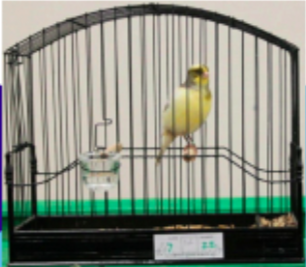A Beginner’s Guide to Fife Canaries
Why Fifes?
For those who have kept Fifes, it comes as no surprise that theFife Canary is and has been the most popular canary breed for over 20 years. The Fife Canary is renowned for being excellent breeders and there are many different colour variations that can be bred.
The Fife Canary Council and the Fife Canary community as a whole is growing year on year. Accessability, excellent opportunities to buy and sell and a thriving competitive show circuit from local to national level is enticing beginners and experienced bird breeders alike to the world of Fife Canaries.
Does this sound like something you’d be interested in?

Getting Started
Whatever your ambitions with Fife Canaries, obtaining good stock is very easy with the breed being so popular. If your ambition is to exhibit and be competitive on the show bench there are numerous top champion breeders around the UK, Ireland and Europe that are always willing to help. Unlike many other breeds obtaining new stock from the very best bloodlines will not burst the bank. To help you find breeders in your area we recommend that you get in touch with your
local Fife Canary Club, the full list of Fife Canary clubs including contact details can be found on Affiliated Clubs page.
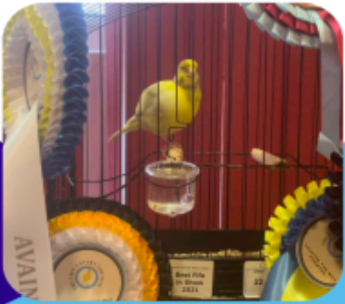
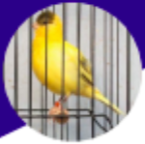
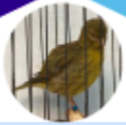
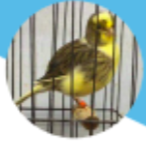
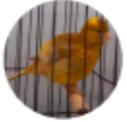
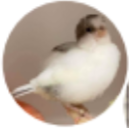
Colours
Normals:
Can range from a yellow coloured bird with no dark (green) markings right the way through to a green coloured bird with no light (yellow) markings. Everything in between would be referred
to as being “variegated,” birds with varying degrees of dark to light feathers.
Cinnamons:
Some birds will be visual cinnamon and again can vary in how much feathers are light (yellow) or dark (cinnamon.) Some cocks can be cinnamon carriers, these will carry the cinnamon gene but will appear normal in colour.*
Whites & Blues:
White birds have no yellow feathers. Again they can vary from whites with no dark (grey) feathers through to the dark birds who are grey in colour. We call these grey coloured birds “Blues.”
Fawns:
Fawn birds are white birds with cinnamon rather than blue markings. These birds will
carry the cinnamon gene.*
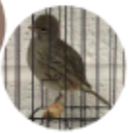
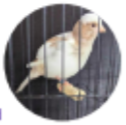
Feather Type
Buff feather:
A buff feathered bird has soft, non-intensive colouring, with some frosting on the tips of the feathers. The feather is round in shape (excluding flight feathers.)
Yellow feather:
Not to be confused with the colour yellow. Yellow feathered birds have more intensive and brighter colouring. The feather shape will be longer and narrower than a buff feather.

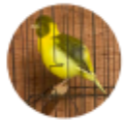
Your Birdroom / Aviary
Make sure to have your birdroom or aviary ready before purchasing any birds. For the welfare of your birds it’s important that you have enough room for your Fifes, don’t house too many together in small cages. Fifes will happily live and breed in both large aviaries and smaller breeding cages. Generaly Fifes will live harmonuously in groups as long as they have ample food and space. Keep an eye out as cock birds may become agressive leading up to the breeding season.
Top Tips:
• Before deciding on the look of your birdroom/aviary, try to visit as many breeders as you can to gain as many tips and ideas as possible.
• Whatever size you plan to make your birdroom/aviary make it bigger, you’ll thank yourself in time.
Bird Room Essentials
Food:
Fife canaries live on canary mix seed. Some breeders now use pellet alternatives. To keep your Fifes in good health offer them a variety of foods such as greens, fruit and veg.
Equipment:
Pearches, seed hoppers, egg drawers, finger drawers, food trays and baths. The style and size will depend heavily on your birdroom, make sure they are suitable before buyng.
Suppliments:
There are an array of different suppliments that can help your Fifes to thrive. Some are given all year round and some at specific times of the year. Ask around and be sure to do your research before spending your money.
Medicines:
A broad spectrum antibiotic for birds will often do the trick for any sick Fife Canary. Be sure to use a probiotic following treatment to restore the birds good bacteria. Treat your birds with a wormer to prevent any internal parasites.
Mite prevention:
Key to any success in breeding any type of bird. Again there are many different products available, do your research and use what works best for you. Prevention is always better than treatment.

Breeding
Fife canaries are excellent breeders and you can expect a high yield of chicks from each pair. Hens tend to lay 4 or 5 eggs each round and the incubation period is 13 days. If you are breeding Fifes to the standard for showing it is important to choose your pairings carefully. Make sure to pair a buff feathered bird to a yellow feathered bird and keep an eye on the size of the birds.
Breeding season essentials:
Egg food Soak seed
Nest pans Condition seed
Nest felts Rings
Nesting material Dummy eggs
Liquid calcium & grit Record book
Egg/Finger drawers Pecking trays
Exhibiting
The size of the Fife Canary is the most important feature when exhibiting. A Fife should not exceed four and a quarter inches in length. Visit our website to see the full judges points allocation and description for each feature of the Fife Canary. Fife Canaries are exhibited in Dewar show cages (UK & Ireland.) Soft wood chip as cage floor covering, spars of show cages to be placed so as to leave five empty wires between them – the first spar to be on the drinker hole wire, cage labels to be placed directly under spar away from drinker. When entering your Fifes into a show you will need to place each bird into the correct class. This will depend on the colour and feather type (Buff or Yellow) of the bird. The full show classification can be found on our website along with a helpful guide to make sure you class your birds correctly.
